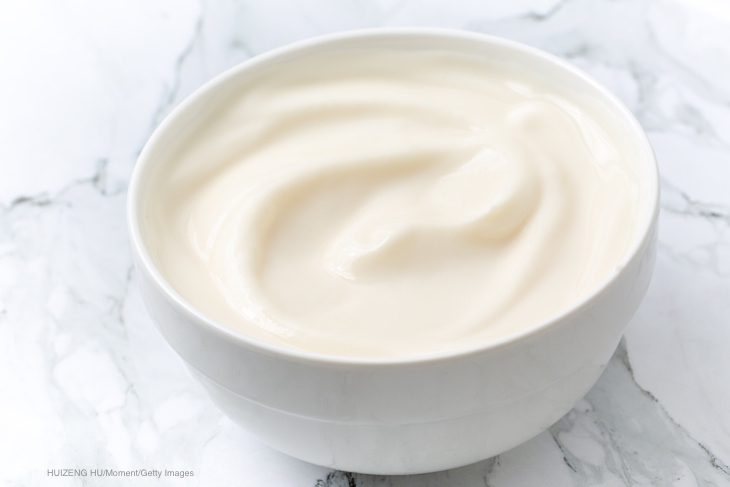An organic yogurt E. coli outbreak that includes 11 confirmed cases in Washington now also includes a secondary food poisoning case in Arizona, a health department spokesperson told Food Poisoning Bulletin today. The patient, a 2-year-old girl, did not eat the yogurt but appears to have been exposed to the bacteria by a relative visiting from Washington. She did not require hospitalization.
The E. coli O157:H7 outbreak has been linked to grass-fed, organic yogurt made by Pure Eire Dairy of Othello, WA. It was sold under the brand name PCC at PCC Community Markets and the brand name Pure Eire at Super 1 Foods, Andy’s Market and Blue Valley Meats in Walla Walla County and elsewhere. PCC and Pure Eire have both issued yogurt recalls.
In addition to 8-oz and 16-oz containers of yogurt, the PCC recall also includes deli items made with the yogurt. These products include:
• Yogurt (salad bar)
• Butter Chicken (hot bar and to-go casseroles)
• Spicy Yellow Curry Chicken (hot bar and to-go casseroles)
• Tzatziki Sauce (grain bowl bar, to-go spreads)
• Sticky Toffee Pudding (refrigerated desserts)

Organic Yogurt E. coli Outbreak
Since early May, health officials have been investigating an E. coli O157:H7 outbreak in Washington. Initially, they suspected that the food source was some kind of fresh produce. King County health officials were the first to discover the outbreak. At the time of their May 6 announcement, seven King County children under the age of 14 were sick, six had been hospitalized and two had HUS.
Then two cases were reported from separate households in neighboring Snohomish County. One of the patients was a child under 10 who had been hospitalized. The other patient was a woman in her 20s. A few days after these cases were announced, illnesses in Benton and Walla Walla counties, more than two hundred miles away, were reported and the state health department took over the investigation.
The Washington State Department of Health is performing genetic tests on the E. coli cultured from each patient. This type of testing identifies the genetic “fingerprint” of each bacterial strain. Matching fingerprints indicate the patients were sickened by the same source. The 11 people with confirmed illnesses reported onset of illness dates ranging from March 9 to April 21, 2021.
E. coli O157:H7 and HUS
Although many E. coli strains are harmless, some strains, including E. coli O157:H7, produce a substance that is poison to humans called a Shiga toxin. Cattle are the primary reservoir of E. coli O157:H7.
Symptoms of an E. coliinfection usually develop within three to five days of exposure. They include abdominal cramps and diarrhea that can be bloody. Symptoms of HUS, which most often affects children, usually develop one week after initial E. coli symptoms. They include pale skin, decreased urination, fatigue, unexplained weakness, unexplained bruising, fainting, and bloody diarrhea.
HUS can cause kidney failure, seizure, stroke, coma, and death. Anyone with HUS symptoms should seek immediate, emergency medical care.
Previous Pure Eire Recalls
This is not the first E. coli recall for Pure Eire. The diary sells both pasteurized and raw (unpasteurized) products. In 2013, Pure Eire issued a raw milk recall for potential E. coli contamination and temporarily suspended raw milk sales while authorities investigated.
Also in 2013, Pure Eire issued a recall for some of its pasteurized milk and cream after the Washington Department of Agriculture noted a pasteurization problem. Pure Eire uses a method of pasteurization called vat pasteurization, which is also called “batch” or “low-temperature long-time pasteurization.” This method involves heating the dairy product to a certain temperature for 30 minutes and then quickly cooling it.
During vat pasteurization, the temperature in the air space above the vat must constantly remain 5˚F above the holding temperature of the liquid in the vat. The issue in 2013 was with the air space temperature during vat pasteurization.
Health officials have not yet determined how the pasteurized milk used to make this yogurt became contaminated. Most outbreaks associated with dairy products do not involve pasteurized products, according to the Centers for Disease Control and Prevention (CDC). But they do happen.
Sometimes there is an issue with pasteurization. Sometimes the contamination happens after pasteurization. This can occur when a contaminated ingredient is introduced or if there is an issue with the cleanliness of the equipment.
In 2016, a Listeria outbreak linked to pasteurized chocolate milk sickened 34 people in Ontario, Canada. Like this outbreak, health officials first suspected fresh produce (leafy greens) as the food source. Cheddar cheese and cole slaw also made the lineup.
Three years after the outbreak, Canadian researchers published a study about the outbreak. One of their conclusions was that more attention should be paid to equipment design and maintenance programs.




